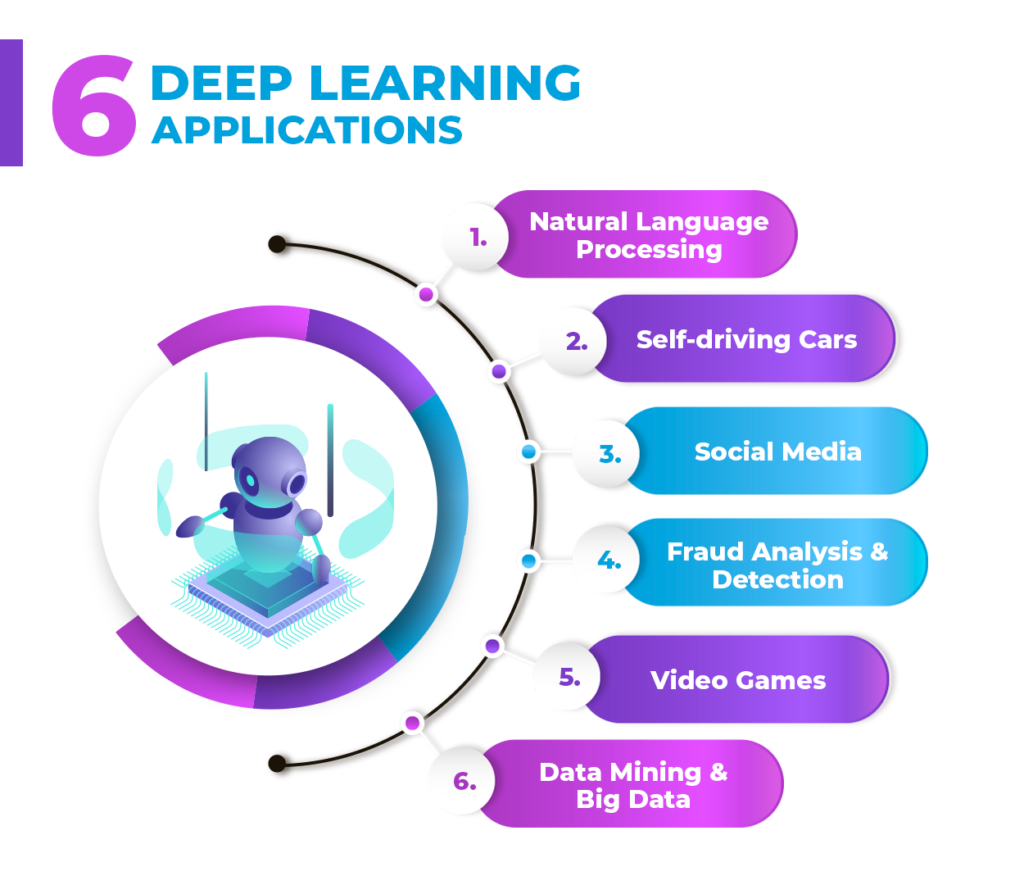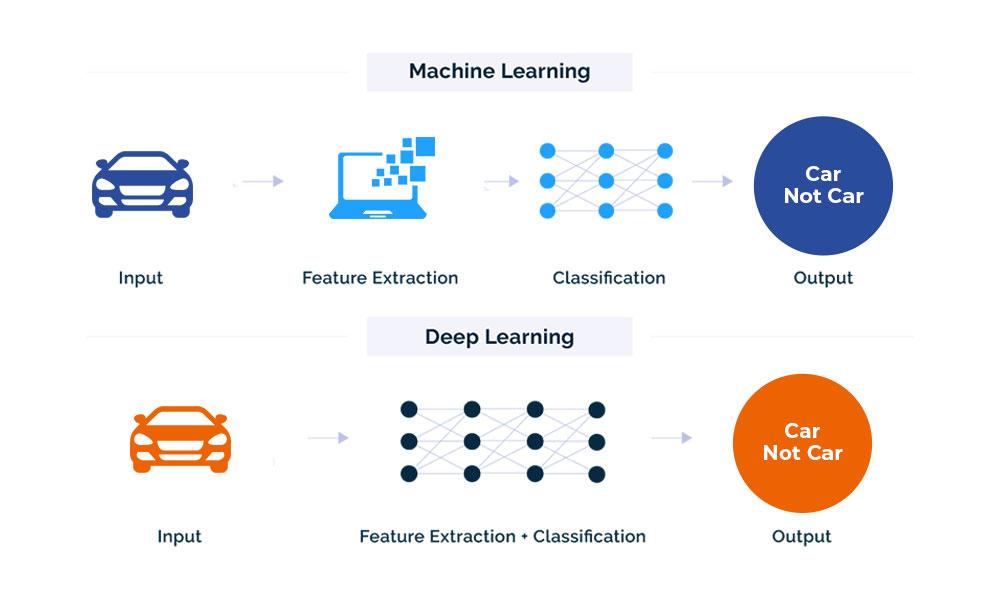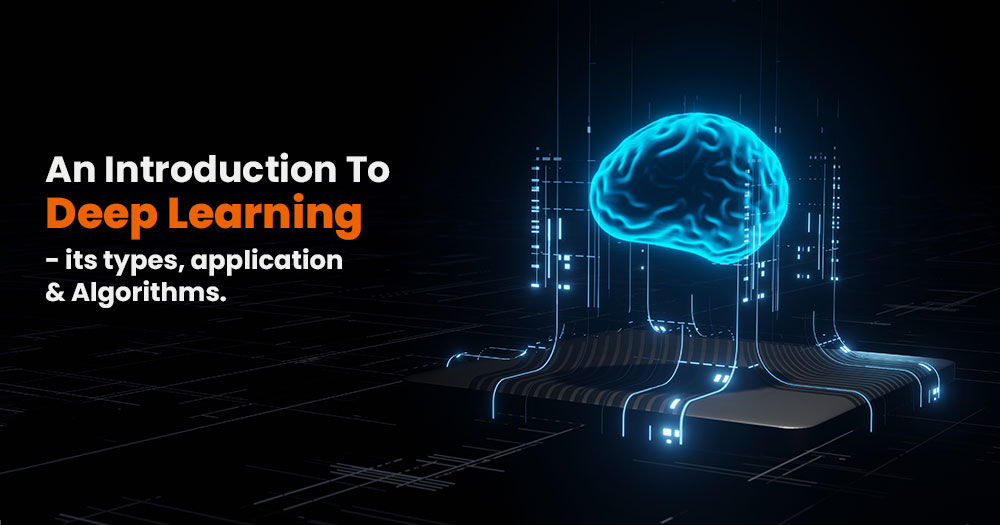It’s rightly been said that data is the new oil & we currently live in the Big data era wherein all domains of science and industry generate massive amounts of data. This confronts us with unprecedented challenges regarding their analysis and interpretation. Due to this reason, there is an urgent need for novel machine learning and artificial intelligence methods to help utilize these data. DL is a novel methodology currently receiving much attention. Once you’ve read this article, you’ll know about Deep Learning, its types, application & more.
What is Deep Learning?
Deep learning has been receiving a lot of attention in recent years, and for good reasons. It’s giving results that were not possible before. At its simplest, it can be understood as a way to automate predictive analytics. While traditional ML algorithms are linear, deep learning algorithms are stacked in a hierarchy of increasing complexity and abstraction.
How Does Deep Learning Work?
Deep learning networks are developed by discovering intricate structures in the data they experience. These networks can create multiple levels of abstraction to represent the data by building computational models composed of multiple processing layers.
For instance, a deep learning model known as a convolutional neural network can be developed using large numbers (in millions) of images, such as those containing dogs. This type of neural network generally learns from the pixels contained in the pictures it acquires. It classifies groups of pixels representing a dog’s features, with groups of features such as paws, ears, eyes, etc., indicating the presence of a dog in an image. It is conceptually different from conventional machine learning. In this example, a domain expert must spend much time engineering a conventional machine learning system to detect the elements representing a dog.
For various tasks, such as speech recognition (aka natural language processing), robotics, and machine translation, the performance of deep learning mechanisms far exceeds that of conventional ML systems. This is not to say that creating deep learning systems is easy relative to conventional machine learning systems. Although recognition of features is autonomous in deep learning, thousands of hyperparameters need to be fine-tuned for the deep learning model to become more effective.
Types of Deep Learning Algorithms
Deep learning algorithms grow every day, making these new goals reachable. We’ll cover 2 primary ones here just to illustrate some of the ways data scientists and engineers apply deep learning practically.
Convolutional Neural Networks (CNN)
Convolutional neural networks (CNN) are specially built algorithms designed to work on images. The ‘convolution’ process applies a weight-based filter across every element of an image, facilitating the device to process and react to elements within the picture itself.

This is helpful when you need to scan a large volume of images for a specific element or feature, for example, images of the ocean bathymetry for evidence of a shipwreck or identifying a face in a picture with a crowd. This computer image/video analysis and comprehension science is called ‘computer vision and represents a high-growth area in the industry over the past decade.
Recurrent Neural Networks (RNN)
Recurrent neural networks or ‘RNN’ introduce a key element in machine learning absent in simpler algorithms: memory. The computer can keep past data points and decisions ‘in mind’ and consider them while reviewing current data – introducing the power of context.

This has turned RNN into a major focus for natural language processing work. Like a human, the computer will better understand a text if it has access to the sound and content that came prior to it. Likewise, driving directions can be more precise if the computer ‘knows’ that everyone following a recommended route on a Saturday night takes twice as long to get where they are going.
Top 6 Applications of Deep Learning
Deep learning is increasingly becoming a part of our day-to-day lives. From search engines like Google to self-driving cars like Tesla that demand high computational power. Let’s quickly look at some of the use cases of Deep Learning :

Natural Language Processing
Deep learning can be used for natural language processing and speech recognition, allowing machines to process human-like communication. A deep network of this kind is typically a combination of CNN plus long short-term memory (LSTM) recurrent neural networks trained on large databases of annotated text or audio data to replicate how people normally speak or write.
Self-driving Cars
Elon Musk strongly believes self-driving cars are the extension of active safety and something we should promote. One of the engrossing technologies of modern times, self-driving cars, are designed using deep neural networks, where these cars use ML algorithms. They detect objects surrounding the car, the distance between the car and other vehicles, the sign boards, identify traffic signals, determine the driver’s condition, etc.
Social Media
Giants like Twitter deploy deep learning algorithms to enhance its product. They process and analyze a lot of data by the deep neural network to learn over time about the possibilities of user preferences. Instagram uses it to avoid cyberbullying and erasing annoying comments. Facebook uses it to recommend friends, pages, various products, etc. Social media websites like Facebook use the ANN algorithm for facial recognition, which makes perfect tagging plausible.
Fraud Analysis & Detection
Fraud is a growing problem in the data-driven world. Identify theft and imposter scams are the two most common fraud categories. To help prevent fraud, top companies use it to detect anomalies in user transactions. To create a unique user profile, those companies deploy deep learning to collect data from various sources, including the device location, length of stride, and credit card purchasing patterns.
Video Games
Deep learning has recently taught itself how to play video games on its own by merely observing the screen. In contrast, it plays against another player & uses reinforcement learning algorithms where it succeeds each time. It gets a reward signal. Still, every time fails at an obstacle. The program tries again until it eventually figures out how to overcome the barriers on its own without any pre-programmed rules.
Data Mining & Big Data
Deep learning is also being used in data mining applications where computer programs can find hidden information within large datasets, which can be anything from predicting what an OTT user would want to watch based on their viewing history to identifying credit card fraud.
Key Points of Difference Between Deep & Machine Learning

- Machine learning is about computers being able to think and act with less human intervention; deep learning is about computers learning to think using structures modeled on the human brain.
- Deep learning is a type of ML, which is essentially a subset of artificial intelligence.
- Deep learning can analyze images, videos, and unstructured data in ways machine learning can’t easily do.
- Machine learning requires less computing power; deep learning typically needs less ongoing human intervention.
- Every industry will have career paths that involve machine and deep learning
Conclusion!
Deep learning has evolved over the latter part of the last decade, and its algorithms have become widely popular in many industries. At present, as the technologies evolve, more organizations are adopting the breakthroughs of big data and advanced technologies such as AI, ML, IoT, etc., to remain competitive in their industries. It is set to become an indispensable part of business operations as the data grows in the future.


